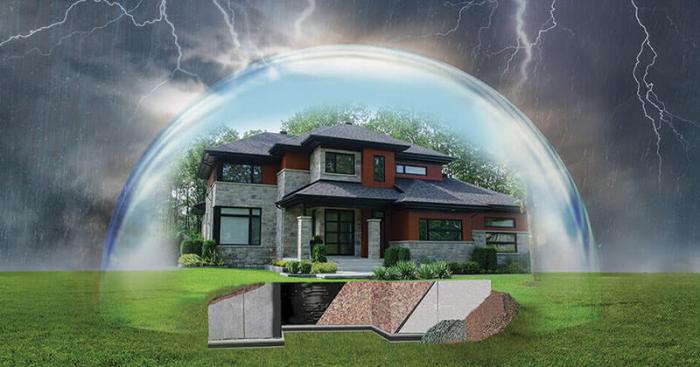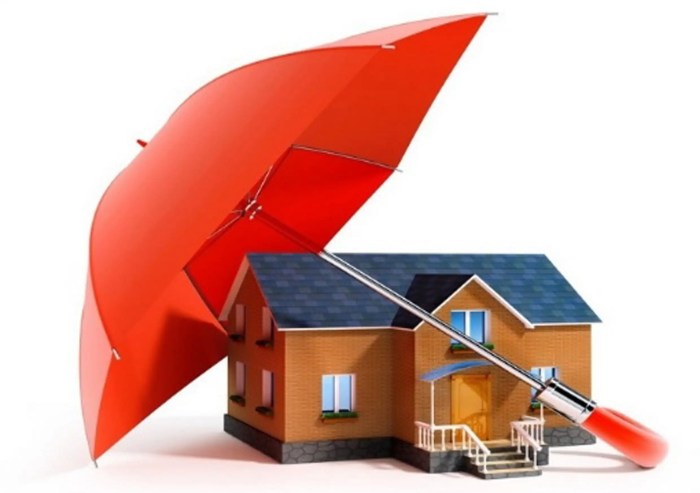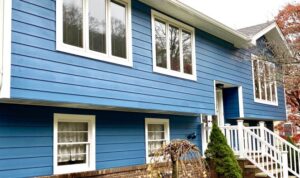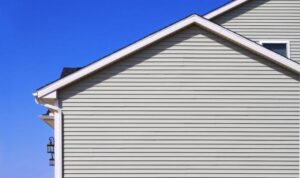Home waterproofing solutions are crucial for protecting your home from water damage and ensuring its longevity. From understanding the basics to exploring different types of solutions, this guide covers everything you need to know to keep your home safe and dry.
As we delve into the world of home waterproofing, you'll discover the importance of proactive measures and the various options available to safeguard your home against water infiltration.
Understanding Home Waterproofing Solutions
Home waterproofing is the process of making a building or structure resistant to the ingress of water. This is important to prevent water damage, mold growth, and structural issues within the home.
Common Areas Requiring Waterproofing
- Basements: Basements are prone to water seepage and flooding, making waterproofing crucial to protect the foundation and belongings stored in this area.
- Roofs: Proper waterproofing of the roof prevents leaks and water damage to the interior of the home.
- Bathrooms: Waterproofing showers, tubs, and bathroom floors is essential to prevent water damage and mold growth in these moisture-prone areas.
- Exterior Walls: Waterproofing exterior walls helps in preventing water infiltration and damage to the structure of the home.
Types of Home Waterproofing Solutions
When it comes to protecting your home from water damage, there are various types of waterproofing solutions available. These solutions help prevent issues such as mold growth, foundation damage, and structural deterioration.
Interior Waterproofing Solutions
Interior waterproofing solutions focus on managing water that has already entered the home. This can include methods such as installing a sump pump, applying waterproof coatings to walls and floors, and sealing cracks in the foundation. These solutions are effective at addressing water issues from the inside out.
Exterior Waterproofing Solutions
On the other hand, exterior waterproofing solutions aim to prevent water from entering the home in the first place. This can involve techniques like installing drainage systems, grading the soil away from the foundation, and applying waterproof membranes to the exterior walls.
By keeping water away from the home's foundation, exterior waterproofing solutions help protect the structure from damage.
Benefits of Each Type of Waterproofing Solution
- Interior waterproofing solutions are effective at managing water that has already entered the home, preventing issues like mold and dampness.
- Exterior waterproofing solutions provide proactive protection by keeping water away from the foundation, reducing the risk of structural damage.
- Combining both interior and exterior waterproofing solutions can offer comprehensive protection against water damage from all angles.
DIY Home Waterproofing Techniques
When it comes to DIY home waterproofing, there are several techniques you can use to protect your home from water damage. Whether you're dealing with a leaky basement or looking to prevent moisture issues in your walls, taking the right steps can save you time and money in the long run.
Choosing the Right Waterproofing Products
Before you start any DIY waterproofing project, it's essential to choose the right products for the job. Here are some tips to help you select the best waterproofing materials:
- Identify the problem areas in your home that need waterproofing, such as basements, crawl spaces, or exterior walls.
- Research different waterproofing products available in the market and read reviews to determine their effectiveness.
- Consider factors like the material of your home's foundation, the severity of the water issue, and your budget when choosing waterproofing products.
- Consult with a professional or the staff at your local hardware store for recommendations on the best products for your specific needs.
Common Mistakes to Avoid in DIY Waterproofing
While DIY waterproofing can be a cost-effective solution, there are common mistakes that many homeowners make when attempting these projects. Here are some pitfalls to avoid:
- Ignoring Proper Surface Preparation:Failing to clean and prepare the surface properly before applying waterproofing products can lead to ineffective results.
- Using the Wrong Waterproofing Products:Choosing the wrong type of waterproofing material for your specific issue can result in wasted time and money.
- Not Following Manufacturer Instructions:It's crucial to carefully read and follow the instructions provided by the manufacturer to ensure the waterproofing products work correctly.
- Overlooking Maintenance:Waterproofing is not a one-time fix; regular maintenance and inspections are necessary to ensure long-lasting protection against water damage.
Hiring Professional Waterproofing Services

When it comes to waterproofing your home, hiring professional services can offer several advantages. Not only do experts have the necessary knowledge and experience to tackle waterproofing effectively, but they also have access to specialized tools and materials that ensure a high-quality and long-lasting solution.
Before selecting a waterproofing contractor, there are several factors to consider
Advantages of Hiring Professionals for Waterproofing
- Expertise: Professionals have the knowledge and skills to identify the root cause of waterproofing issues and provide effective solutions.
- Quality Materials: Professional contractors use high-quality materials that are durable and ensure long-term protection against water damage.
- Time-saving: Hiring experts can save you time and effort, as they can efficiently complete the waterproofing process without errors.
- Warranty: Many professional waterproofing services offer warranties on their work, providing you with peace of mind and assurance of quality.
Process of Professional Waterproofing and Its Benefits
Professional waterproofing typically involves a thorough inspection of the property to identify areas of concern. The contractor will then recommend the best waterproofing solution based on the specific needs of your home. This could include exterior waterproofing, interior waterproofing, or a combination of both.
Benefits of professional waterproofing include:
- Prevention of water damage: Professional waterproofing helps prevent costly water damage to your property, protecting your investment.
- Improved indoor air quality: Waterproofing can help reduce moisture levels in your home, promoting better indoor air quality and reducing the risk of mold growth.
- Increased property value: A properly waterproofed home can increase its resale value and appeal to potential buyers.
Maintenance of Waterproofing Systems

Regular maintenance of waterproofing systems is crucial to ensure the longevity and effectiveness of your home's protection against water damage. By staying proactive and addressing any issues promptly, you can avoid costly repairs and potential structural damage. Here, we will discuss the importance of regular maintenance, provide a checklist for maintaining a waterproofed home, and highlight signs that indicate the need for waterproofing maintenance.
Importance of Regular Maintenance
- Prevents water intrusion: Regular maintenance helps identify and fix any weak spots or damage in the waterproofing system, preventing water from seeping into your home.
- Extends lifespan: By taking care of your waterproofing system, you can prolong its lifespan and avoid the need for premature replacement.
- Cost-effective: Investing in regular maintenance is more cost-effective than dealing with extensive water damage repairs in the future.
Checklist for Maintaining a Waterproofed Home
- Inspect the exterior walls and foundation for cracks or damage.
- Clean gutters and downspouts regularly to ensure proper drainage.
- Check the condition of caulking around windows, doors, and other openings.
- Monitor the sump pump to ensure it is functioning correctly.
- Schedule annual professional inspections to identify any potential issues.
Signs that Indicate the Need for Waterproofing Maintenance
- Water stains on walls or ceilings.
- Musty odors or mold growth in basements or crawl spaces.
- Puddles or standing water near the foundation.
- Cracks in the foundation or exterior walls.
- Damp or wet insulation in the attic or walls.
Final Thoughts
In conclusion, home waterproofing solutions are a key aspect of home maintenance that should not be overlooked. By taking the necessary steps to waterproof your home, you can prevent costly damage and enjoy peace of mind knowing your property is well-protected.
FAQ Explained
What are the benefits of exterior waterproofing?
Exterior waterproofing creates a barrier against water intrusion from the outside, offering comprehensive protection for your home's foundation and walls.
How often should I maintain my home's waterproofing system?
Regular maintenance is recommended at least once a year to ensure the effectiveness of the waterproofing system and address any potential issues promptly.
Is DIY waterproofing as effective as professional services?
While DIY waterproofing can be cost-effective, professional services often provide more thorough and long-lasting solutions tailored to your home's specific needs.






